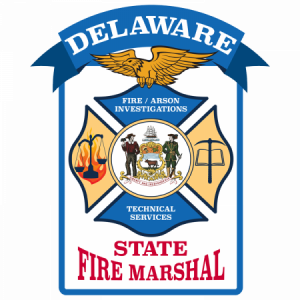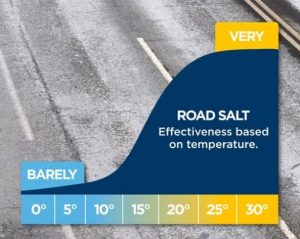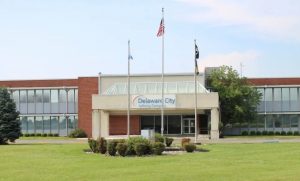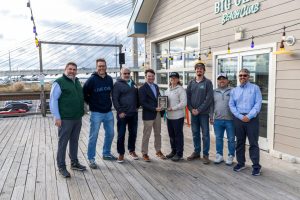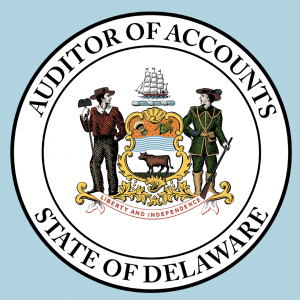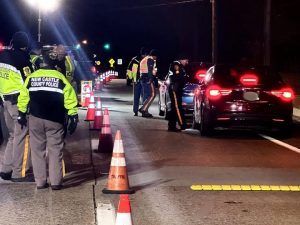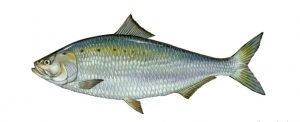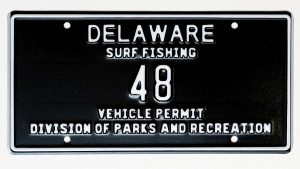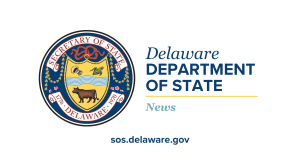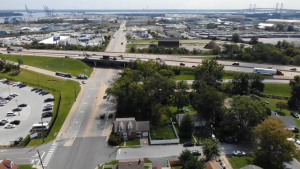DOVER, Del. – For Earth Day 2020, DNREC announced it has successfully used an innovative approach to reduce polychlorinated biphenyls (PCBs) in two Delaware waterways. Newly released scientific data are validating the new method of sequestering pollutants with activated carbon, which render them unavailable for uptake by fish and other aquatic organisms.
The first success was with an activated carbon product called SediMite™ at Mirror Lake in Dover in 2013. The project is featured in a new article co-authored by several project participants, including two DNREC scientists, and published in the May issue of Journal of Environmental Engineering. The article, titled “Full-Scale Application of Activated Carbon to Reduce Pollutant Bioavailability in a 5-Acre Lake” presents a summary of the monitoring data collected at the site between 2013 and 2018. Highlights include an approximate 80% reduction in PCB concentrations in sediment porewater, which is the water trapped between grains of sediment in the bottom of a water body. The study also found an approximate 70% reduction in PCB concentrations in Mirror Lake’s resident fish.
“The recognition by the Journal of Environmental Engineering reflects how Delaware is on the leading edge of environmental technology, an area that DNREC is exploring more and more” said DNREC Secretary Shawn Garvin. “Mirror Lake was a successful pilot, so DNREC’s team sought a second opportunity to try the technology.”
The A Street Ditch project became a focus for DNREC’s Watershed Approach to Toxics Assessment and Restoration (WATAR) Team after samples confirmed that drainage ditch sediments were a continuing source of PCBs to the Christina River. The project, in coordination with cleanup efforts at the adjacent South Wilmington Wetland Park site, provided an opportunity to evaluate an enhanced carbon sequestration technology developed by DNREC’s partners at the University of Maryland Baltimore County (UMBC).
The enhanced technology involves the use of SediMite™ with the addition of PCB-destroying micro-organisms (inoculant). In theory, the activated carbon will sequester PCBs, as shown in Mirror Lake. However, the micro-organisms (which exist naturally in the environment in much smaller numbers) will effectively degrade the PCB molecules over time. Initial results, collected only 5 months after the inoculated Sedimite™ was applied to the ditch sediments, show that total PCB concentrations in the top layer of sediments across the A Street Ditch study area dropped by an average of 25%. In addition, surface water PCB concentrations across the site area have dropped by an average of 35%. Most impressive is concentrations of total PCBs in sediment porewater have dropped by an average of 64%. Additional monitoring will occur in July 2020, and again in July 2022.
Another harbinger for clean water in Delaware is that sequestering or destroying legacy PCBs – the primary risk driver for most of the fish consumption advisories issued by DNREC and the Delaware Division of Public Health – prevents these contaminants from entering the food chain. With increasing confidence in these innovative sediment remediation technologies, DNREC is beginning to plan for larger-scale projects, in key watersheds across Delaware, with similar water quality impairments.
“What these projects have achieved brings the longstanding goal of clean water for all Delawareans a little closer,” said Secretary Garvin. “DNREC’s dedicated scientists and staff are committed to improving water quality and making smarter use of resources at our disposal, including the technology that has driven both the Mirror Lake and A Street Ditch projects.”
DNREC’s A Street Ditch pilot project was supported by $188,000 in Hazardous Substance Cleanup Act (HSCA) funds and a $30,000 US Environmental Protection Agency multi-purpose grant. For more information, view the DNREC YouTube video about the WATAR team’s A Street Ditch pilot and another video on the Mirror Lake project or visit the DNREC website.
About DNREC
The Delaware Department of Natural Resources and Environmental Control protects and manages the state’s natural resources, protects public health, provides outdoor recreational opportunities and educates Delawareans about the environment. For more information, visit the website and connect with DNREC on Facebook, Twitter or LinkedIn.
Media Contact: Micahael Globetti, michael.globetti@delaware.gov
###










